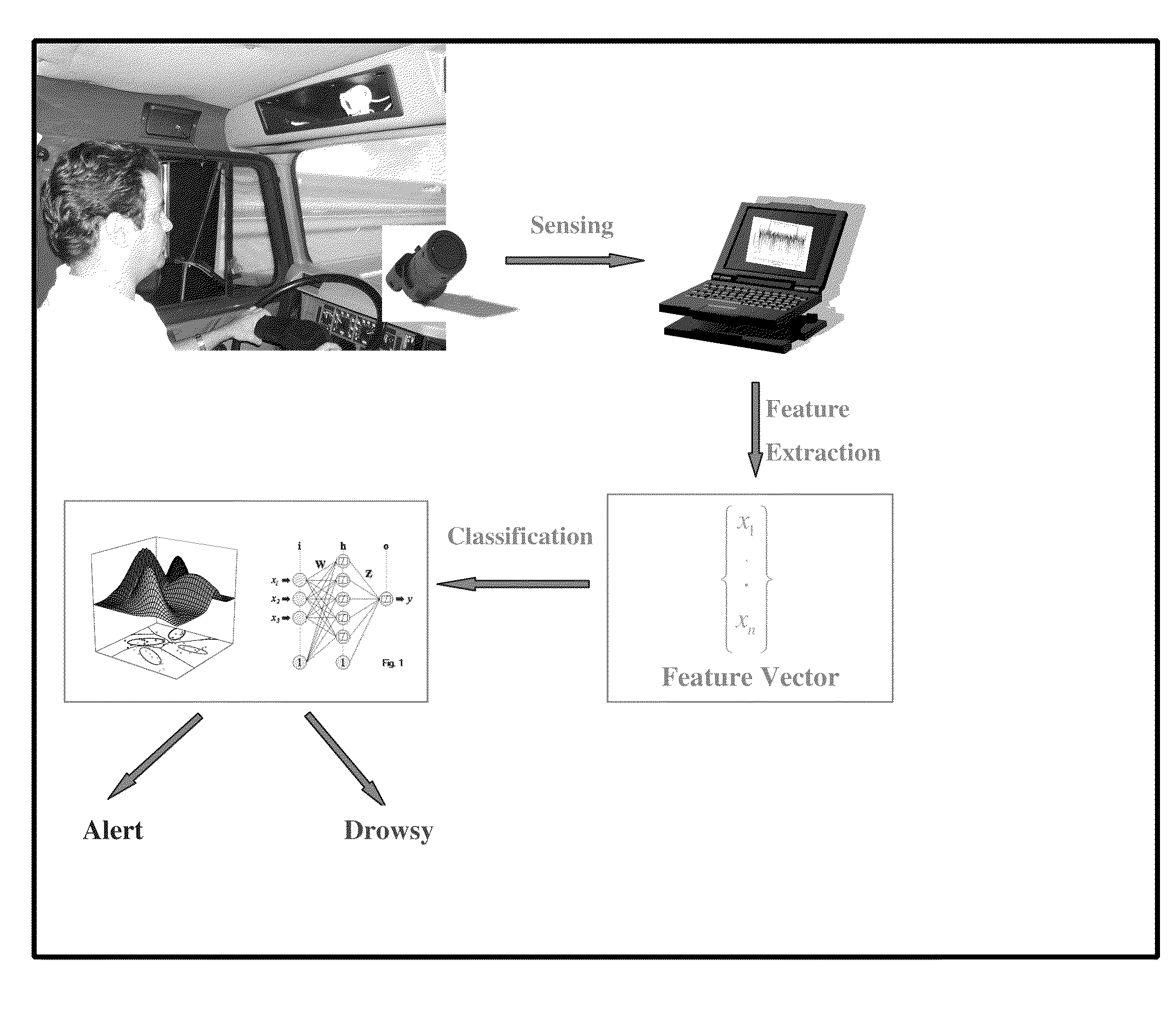Unobtrusive driver drowsiness detection system and method
a detection system and driver technology, applied in the field of unobtrusive driver drowsiness detection system, can solve the problem that it cannot guarantee the work of the other type, and achieve the effect of high accuracy
- Summary
- Abstract
- Description
- Claims
- Application Information
AI Technical Summary
Benefits of technology
Problems solved by technology
Method used
Image
Examples
Embodiment Construction
[0043]In describing a preferred embodiment of the invention illustrated in the drawings, specific terminology will be resorted to for the sake of clarity. However, the invention is not intended to be limited to the specific terms so selected, and it is to be understood that each specific term includes all technical equivalents that operate in similar manner to accomplish a similar purpose.
[0044]The primary factors of driver drowsiness are the sleep-wake cycle and the amount of wakefulness. The likelihood of drowsiness onset and dozing off is higher during sleep cycle or night sessions. Drowsiness is identified and validated in two ways: (a) Eye Closure Measures (PERCLOS), and (b) Subjective Drowsiness Rating. The Eye Closure Measures (PERCLOS) of drowsiness indicates the intervals of time the eyes were closed. PERCLOS (PERcent eyelid CLOSure) is the percentage of time the eye is more than 80% closed (Dinges, Mallis et al. 1998; Grace, Byrne et al. 1998).
[0045]Under Subjective Drowsi...
PUM
 Login to View More
Login to View More Abstract
Description
Claims
Application Information
 Login to View More
Login to View More - R&D
- Intellectual Property
- Life Sciences
- Materials
- Tech Scout
- Unparalleled Data Quality
- Higher Quality Content
- 60% Fewer Hallucinations
Browse by: Latest US Patents, China's latest patents, Technical Efficacy Thesaurus, Application Domain, Technology Topic, Popular Technical Reports.
© 2025 PatSnap. All rights reserved.Legal|Privacy policy|Modern Slavery Act Transparency Statement|Sitemap|About US| Contact US: help@patsnap.com



